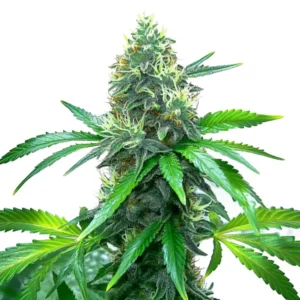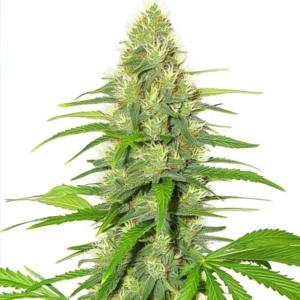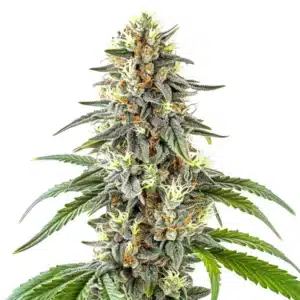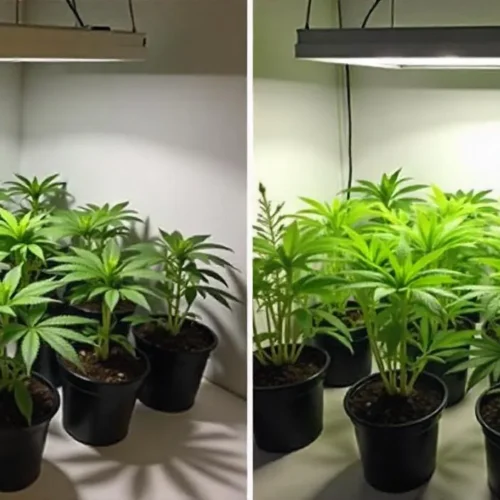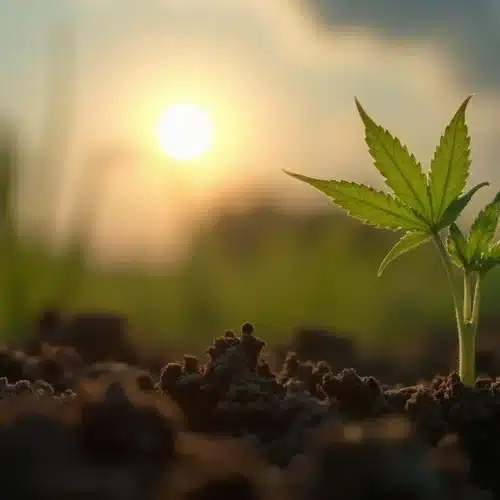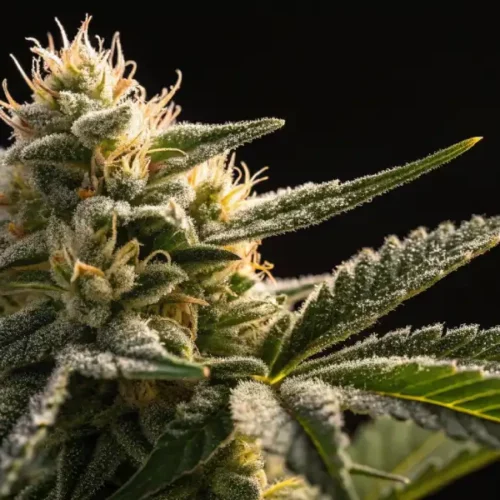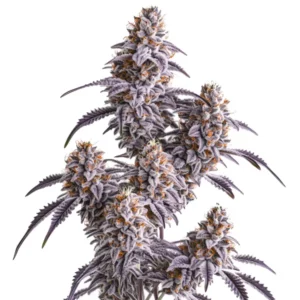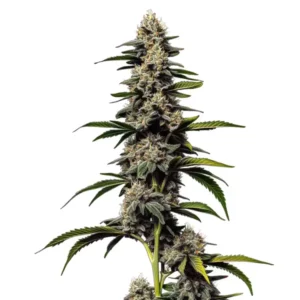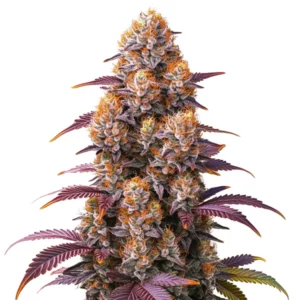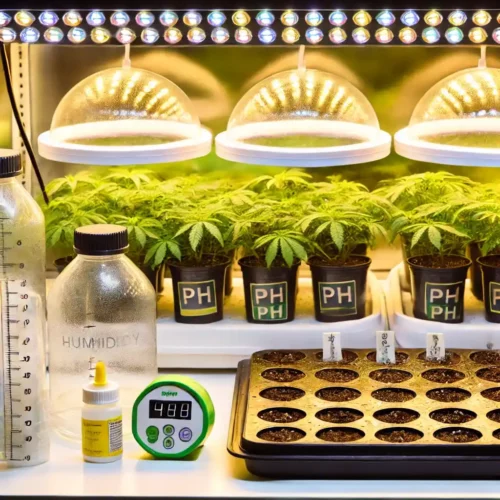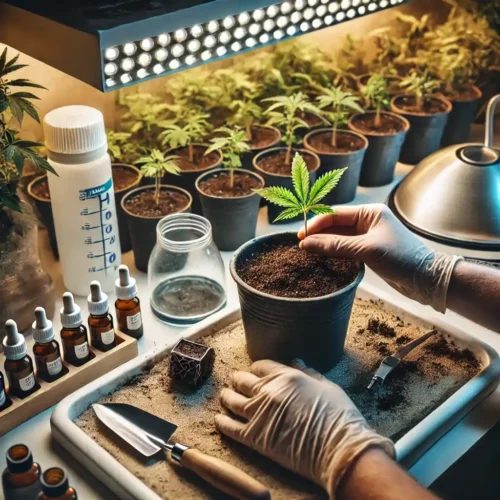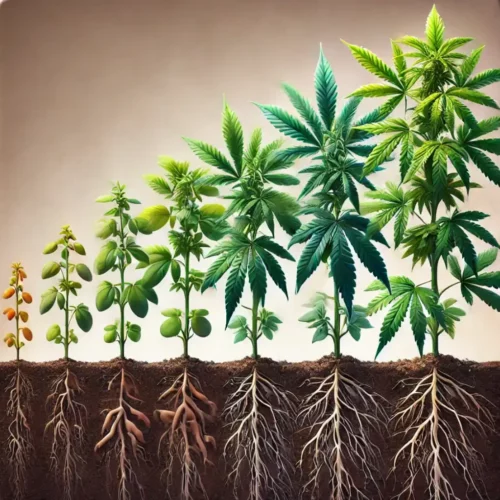Choosing the Best Light for Cannabis Clones
When working with cannabis clones, understanding why lighting matters is critical. Providing the best light for clones optimizes their early growth stages, helping them root faster and develop into strong plants. The right lighting replicates natural light cycles, allowing you to control the environment and give clones exactly what they need without the unpredictability of natural light conditions.
Effective lighting is the foundation for clones to achieve quality growth. When you select the best light for clones, it supports rooting and prevents clones from stretching, a common issue when light is insufficient. Each light choice plays a role in shaping clones’ success, from spectrum to intensity. Clones that receive optimal lighting establish roots faster, grow healthier, and ultimately reach harvest more efficiently, maximizing returns on each cycle.
Why the Right Light Matters for Clones
The best light for clones ensures each phase of early development progresses smoothly. Light intensity and spectrum directly influence photosynthesis, driving clones’ energy and root production. Weak or poor lighting can slow growth, causing clones to struggle to root. An ideal setup helps create a controlled, dependable environment where clones have consistent access to light, enhancing your control over the entire growth process.
When clones receive balanced lighting, they absorb nutrients more efficiently and grow steadily. Proper lighting can also reduce transplant shock, a frequent hurdle in clone cultivation. By offering reliable and adequate light, clones experience less stress, leading to fewer setbacks and a more uniform crop. This support translates into higher-quality plants that carry their early strength through the entire life cycle.
How Light Affects Clone Development and Health
Light isn’t just for growth, it actively boosts the clone’s overall resilience and health. For example, the right spectrum helps clones avoid common issues like nutrient deficiencies and weak stems. When you provide the best light for clones, you essentially empower them to reach their potential without being held back by developmental limitations.
When selecting lights, considering both quantity and quality is essential. Blue light supports robust vegetative growth, while red light assists in strengthening stems. Combining the right lighting elements for your clones ensures they are strong, resilient, and ready to grow into healthy plants.
Promos & Deals
Optimal Light Spectrum for Clones
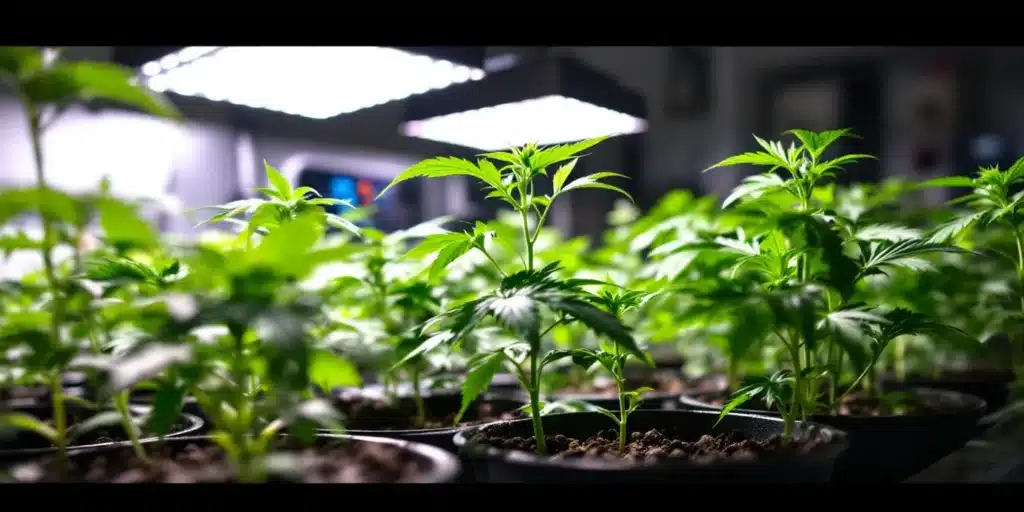
Blue Light vs. Red Light: Which is Best for Clones?
Both blue and red light serve essential functions in clone growth, and knowing when and how to use each can make a difference. Blue light stimulates vegetative growth and is ideal for encouraging root development in clones. By focusing on blue wavelengths, you help clones stay compact and focus on root and foliage development rather than stretching toward light sources.
Red light, while primarily beneficial during flowering, can still play a role in clones by strengthening stems. This combination, especially in full-spectrum lighting, helps develop clones that are sturdy and prepared to withstand transplanting and new environments.
Benefits of Full-Spectrum Lighting for Rooting
Full-spectrum lighting replicates natural sunlight, covering blue, red, and other wavelengths. The best light for clones often comes from full-spectrum setups because it provides an all-inclusive range that supports various growth processes, particularly rooting. Full-spectrum light offers a balanced approach that combines the best of blue and red light benefits, giving clones comprehensive support during early development.
Using full-spectrum lighting allows clones to take advantage of the benefits of each wavelength, ensuring uniform and healthy growth. This holistic approach prepares clones not just for successful rooting but for continued growth, making it easier to transition into later stages with confidence.
LED vs. Fluorescent Lights for Cloning Success
LED and fluorescent lights are popular choices in cloning, each offering unique advantages. LEDs, known for energy efficiency and low heat output, are often regarded as the best light for clones. They provide powerful illumination while keeping energy costs down, ideal for maintaining a steady growth environment. LEDs also offer adjustable spectrums, allowing you to fine-tune light settings as clones mature.
Fluorescent lights, particularly T5 lights, are also common in cloning. They emit gentle light that supports root development without causing heat stress, which is crucial in the early stages. However, fluorescents require more frequent bulb replacement than LEDs, so consider maintenance costs when choosing.
Knowing Light Intensity for Clone Growth
Recommended Intensity Levels to Prevent Clone Stress
Light intensity impacts how effectively clones photosynthesize, and finding the right balance is essential. Intensity that’s too low can lead to weak clones, while overly intense light risks leaf burn and dehydration. Generally, maintaining a light intensity between 75-150 µmol/m²/s is optimal for clones, ensuring they receive ample energy without stress.
Positioning lights at an appropriate height and distance from clones prevents potential intensity-related issues. Adjusting light height as clones grow helps maintain a steady, beneficial intensity, leading to uniform growth and healthier root development.
Adjusting Light Intensity as Clones Grow
As clones establish roots, they can handle slightly higher light intensities. Raising intensity as they develop can further support photosynthesis, promoting thicker stems and broader leaves. A gradual increase in light exposure aligns with clones’ natural growth trajectory, making it easier for them to transition smoothly into the vegetative stage.
Monitoring clones daily for signs of light stress, such as leaf curling or discoloration, ensures intensity is always within optimal levels. This careful approach allows you to fine-tune your lighting to meet clones’ evolving needs, helping them thrive with minimal stress.
Measuring Light Intensity in the Cloning Area
For accuracy in managing light intensity, using a PAR meter helps you gauge how much light reaches clones at all times. Measuring the best light for clones allows you to adjust levels precisely, supporting their unique needs. A PAR meter specifically measures photosynthetically active radiation, the spectrum clones use for growth, ensuring you provide precisely what they need.
Regular intensity checks are key to preventing light-related stress and promoting consistent growth. By keeping light intensity within a targeted range, you maximize the benefits of each lighting choice, enhancing the effectiveness of your setup for long-term success.
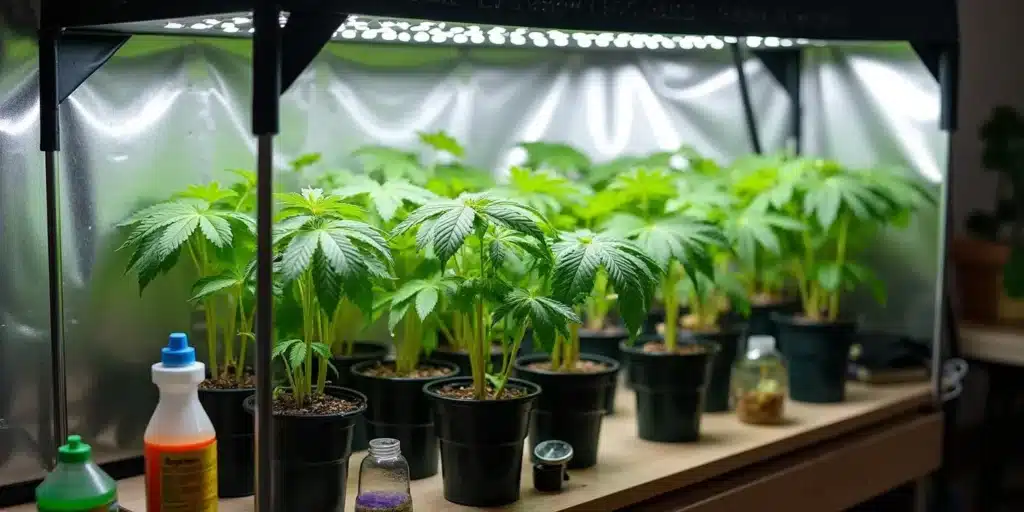
Best Light Schedule for Cannabis Clones
Ideal Light and Dark Hours for Healthy Clones
Setting up the right light schedule is vital for clone development, ensuring they get both light and rest to promote growth. Typically, cannabis clones thrive with an 18/6 light schedule, 18 hours of light and 6 hours of darkness. This schedule mimics natural summer conditions and encourages clones to focus on rooting and foliage growth rather than flowering prematurely.
Maintaining consistent lighting and darkness hours prevents clones from entering the flowering phase prematurely, allowing them to grow more robustly. A balanced light schedule supports clones’ growth needs and gives them the foundation needed to become strong, healthy plants ready for further stages.
Adapting Light Schedules for Different Cloning Phases
As clones mature, their lighting needs might vary slightly, particularly if you’re preparing them for a transition to vegetative growth. Starting with a 24-hour light cycle for the initial few days can be beneficial to promote rooting before shifting to an 18/6 schedule. This initial constant light exposure helps clones establish roots without the added stress of darkness.
Adapting the schedule according to the growth phase allows clones to get exactly what they need at each stage. By keeping clones on a steady light cycle and adjusting only when necessary, you ensure they stay focused on healthy growth, reducing any lag in development.
Using Timers to Maintain Consistent Light Exposure
Timers are a straightforward but essential tool in maintaining a consistent light schedule, eliminating the guesswork and ensuring clones always receive the exact hours of light and dark they need. Automated timers allow you to set your desired schedule without manual intervention, which can make a significant difference in clones’ growth and health.
Consistency in light exposure keeps clones stress-free and prevents any disruptions that could affect rooting and growth. With a reliable timer, you avoid common mistakes like extended light periods or missed dark phases, which can impact clone performance and delay development.
Setting Up the Cloning Environment for Optimal Lighting
Light Height: Ideal Placement Above Clones
Positioning lights at the right height above clones is just as important as choosing the right light. Placing lights too close may lead to leaf burn or dehydration, while lights positioned too far away may lead to stretching as clones reach for light. The best light for clones should ideally be positioned 12-18 inches above the canopy, depending on the intensity and type of light.
Monitoring how clones respond to light height adjustments helps you maintain optimal growth. If clones show signs of stress, such as curling or browning leaves, it may be necessary to adjust light height. Regular checks ensure the best conditions for steady development.
Creating Uniform Light Coverage in Cloning Spaces
A consistent spread of light across your cloning area ensures that each clone receives equal exposure, eliminating potential weak spots. Light should cover the entire tray or area without casting harsh shadows. This uniformity helps all clones develop at the same rate, supporting a balanced root structure and foliage growth.
Reflective surfaces around the cloning area or using high-quality grow lights with built-in spread technology can enhance light coverage. By providing uniform lighting, you optimize the growth environment, making it easy to grow multiple clones to the same standard.
Light Adjustments for Small vs. Large Cloning Areas
Different cloning setups call for different lighting adjustments. Smaller setups benefit from focused lights like LEDs or T5 fluorescents, which provide direct and controlled light exposure. Larger setups may require multiple light fixtures to maintain even coverage, especially as clones expand across a larger area.
Adjusting your light setup to fit the space and clone count maximizes light efficiency and prevents issues like uneven growth. By tailoring lighting to the area’s size, you reduce waste and improve clones’ chances of establishing strong roots and healthy structures.
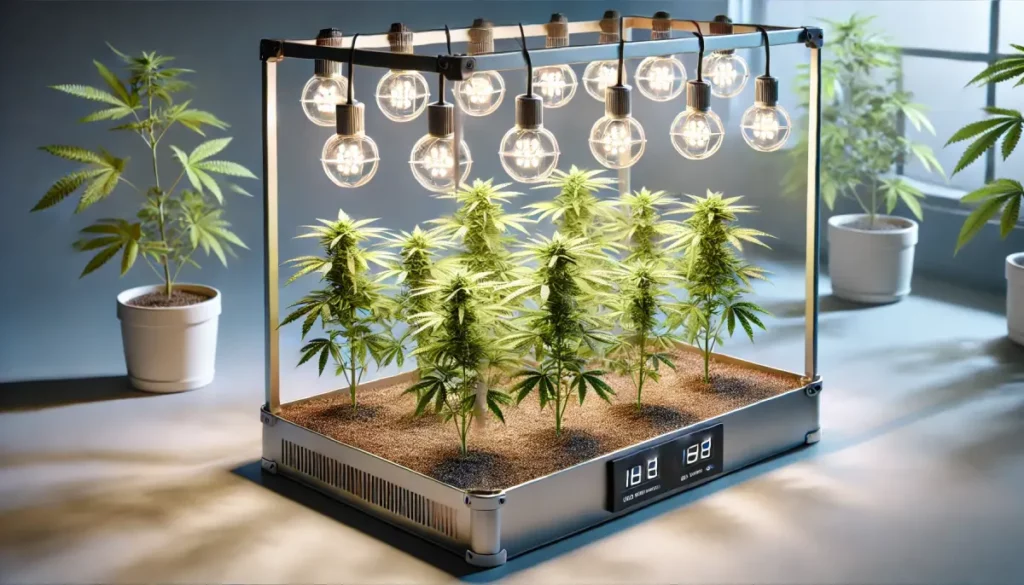
Tips for Maintaining Light Quality and Consistency
Cleaning and Maintaining Clone Lights
Dust, dirt, and buildup on light fixtures can reduce light output and intensity, diminishing the benefits provided to clones. Regular cleaning of lights ensures maximum brightness and intensity reaches your clones. Use a soft, damp cloth to wipe down LED panels, fluorescents, and reflectors every few weeks to keep them in top condition.
Routine maintenance also extends the lifespan of your lights and helps detect any issues, such as faulty connections or loose fixtures, early on. Clean, well-maintained lights are essential for consistent, high-quality results with cannabis clones.
Replacing Worn Bulbs and Equipment
Over time, lights lose their effectiveness due to wear, even if they still appear to be working. For example, fluorescents lose brightness after a certain number of hours, impacting clone growth if not replaced. Replacing worn bulbs or aging equipment ensures clones receive optimal light output, preventing stunted growth due to insufficient lighting.
Keeping track of each light’s lifespan and replacing them on schedule helps avoid any decline in light quality. This small investment pays off by keeping clones on a steady growth trajectory with maximum light efficiency.
Monitoring Changes in Light Quality Over Time
Keeping an eye on light quality over time is crucial, as even small changes can impact clones’ growth. If you notice clones are not performing as expected, it’s worth examining your lighting setup for potential issues like dimming bulbs or irregular output.
Using a PAR meter to measure light quality allows you to track any fluctuations and adjust lighting as needed. Regular checks and adjustments ensure clones always receive optimal light, supporting consistent growth from start to finish.
Troubleshooting Light-Related Issues in Clones
Identifying Signs of Too Much or Too Little Light
Recognizing signs of incorrect light exposure helps you adjust before clones are seriously affected. Clones exposed to too much light may show yellowing or curling leaves, while insufficient light can result in weak, stretched stems. Both issues hinder root development, slowing the growth process and impacting future yield potential.
Monitoring clones daily allows you to catch any early signs of stress and make necessary adjustments. Correcting light exposure promptly supports clones’ recovery and helps them continue to grow healthily and robustly.
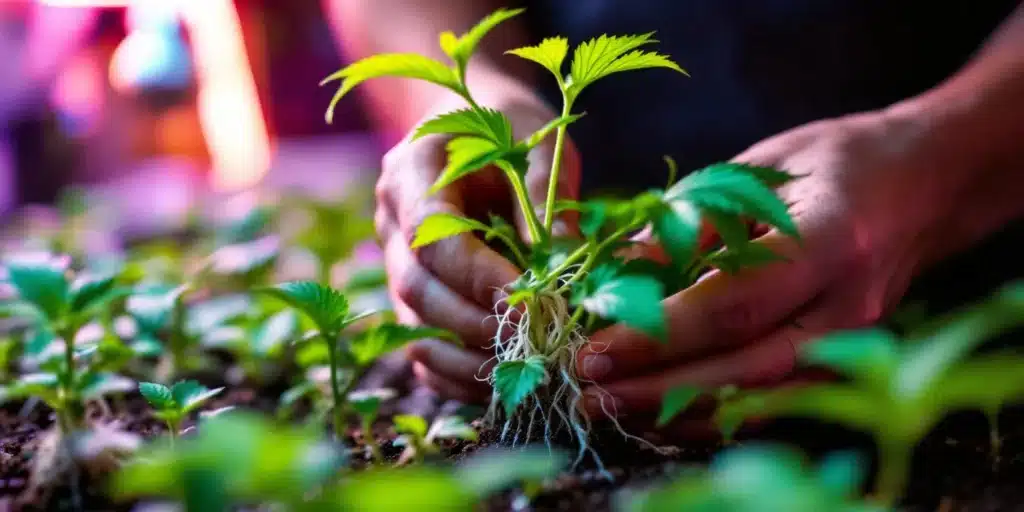
Adjusting Light Setup to Improve Root Development
Rooting success heavily relies on balanced lighting. If clones show signs of weak roots or slow development, adjusting the light setup could stimulate better root formation. Lowering light intensity slightly and ensuring even distribution across the tray often encourages roots to establish themselves without excess strain.
Experimenting with slight modifications can help determine the best light setup for each specific clone batch. Fine-tuning the lighting setup ultimately results in stronger root systems, which translates to more resilient plants as they mature.
Importance of Indirect Light in the Cloning Stage
Direct light can sometimes overwhelm young clones, especially in early stages. Indirect lighting offers a softer approach, reducing stress and allowing clones to focus on rooting. Placing clones in an area with reflective walls or using diffused light sources creates the ideal environment without overwhelming them.
Balancing direct and indirect light exposure promotes steady, gentle growth, which is particularly beneficial for clones’ sensitive early stages. Indirect light allows clones to thrive without the risk of overheating or excessive drying.
FAQs on Best Light for Clones
What is the best light spectrum for cannabis clones?
The optimal light spectrum for clones is typically in the blue range (400-500 nm) as it promotes root development and healthy early growth. Many growers also find success using full-spectrum lights that offer a balanced mix, helping the clones adapt as they mature.
How long should clones receive light each day?
Cannabis clones generally thrive on an 18/6 light schedule, 18 hours of light and 6 hours of darkness. This schedule mimics summer daylight hours, promoting rooting and vegetative growth without triggering flowering.
Should I use LED or fluorescent lights for cloning?
Both LEDs and T5 fluorescent lights are popular for cloning. LEDs are energy-efficient, long-lasting, and provide consistent intensity, while T5 fluorescents are affordable and produce less heat, making them ideal for close placement. The choice depends on your budget and setup needs.
How close should grow lights be to cannabis clones?
For LEDs, keeping them 12-18 inches above the clones is usually best, while fluorescent lights can be placed closer, about 6-12 inches above. Proper distance ensures clones receive adequate light without risking leaf burn or dehydration.
What signs indicate clones are getting too much light?
Signs of excessive light exposure in clones include yellowing leaves, curling tips, or leaves that appear dry or burnt. Reducing light intensity or increasing the distance between lights and clones can alleviate these issues.
Can clones grow with 24 hours of light?
Yes, clones can grow under continuous light for short periods. Some growers use 24 hours of light during the first few days to promote rooting, but an 18/6 light schedule generally provides a better balance, allowing clones to rest and build resilience.


